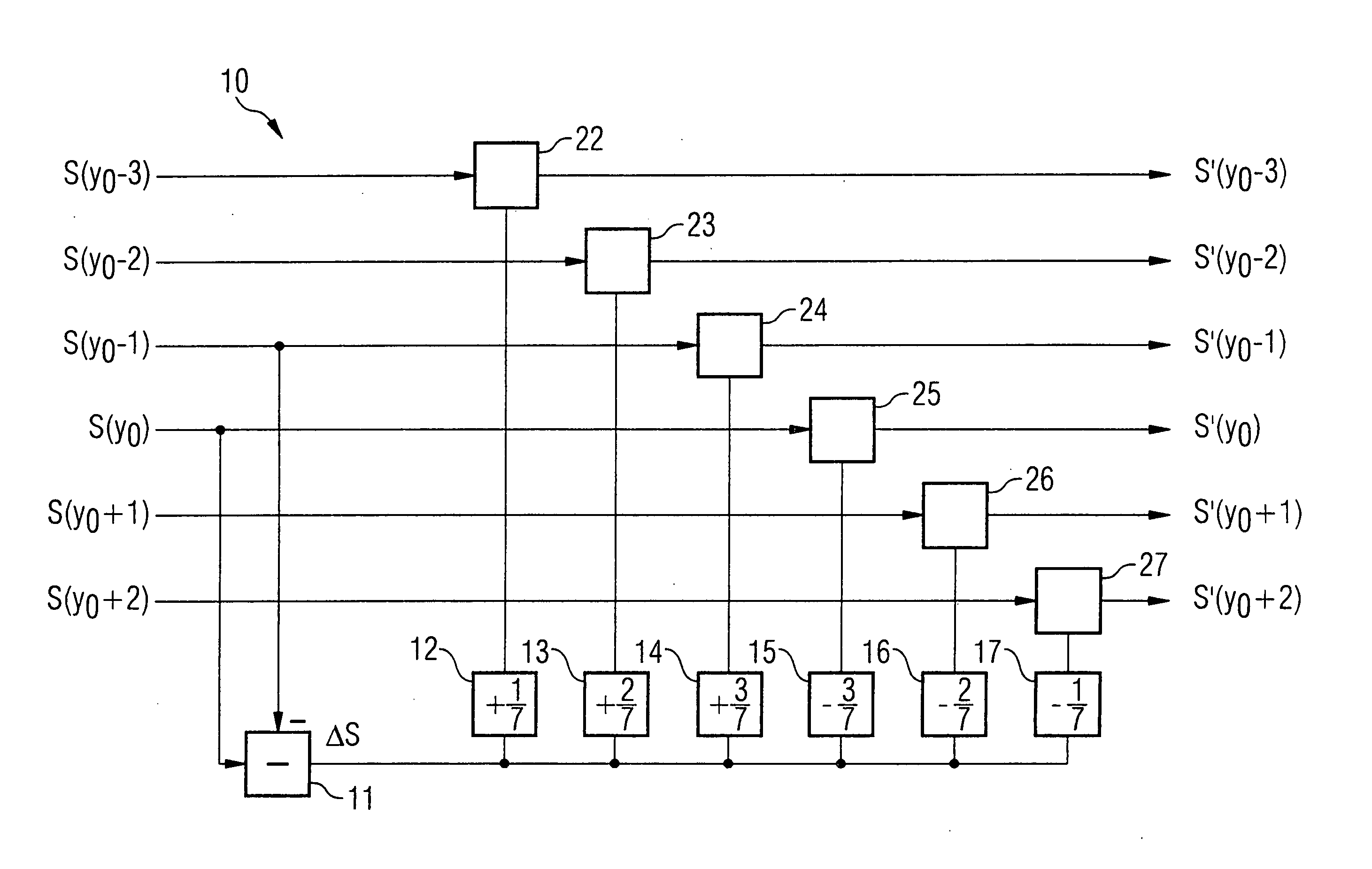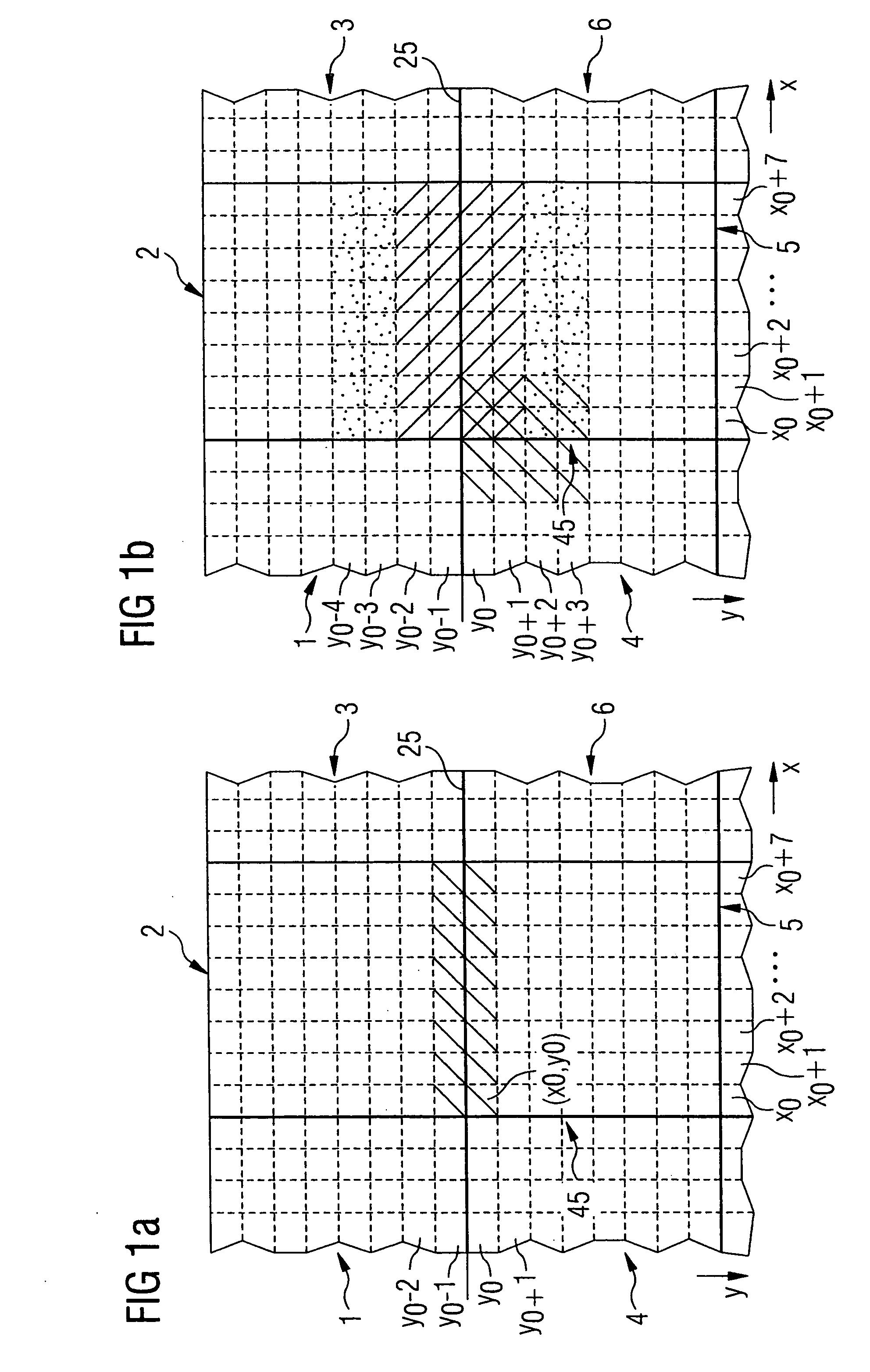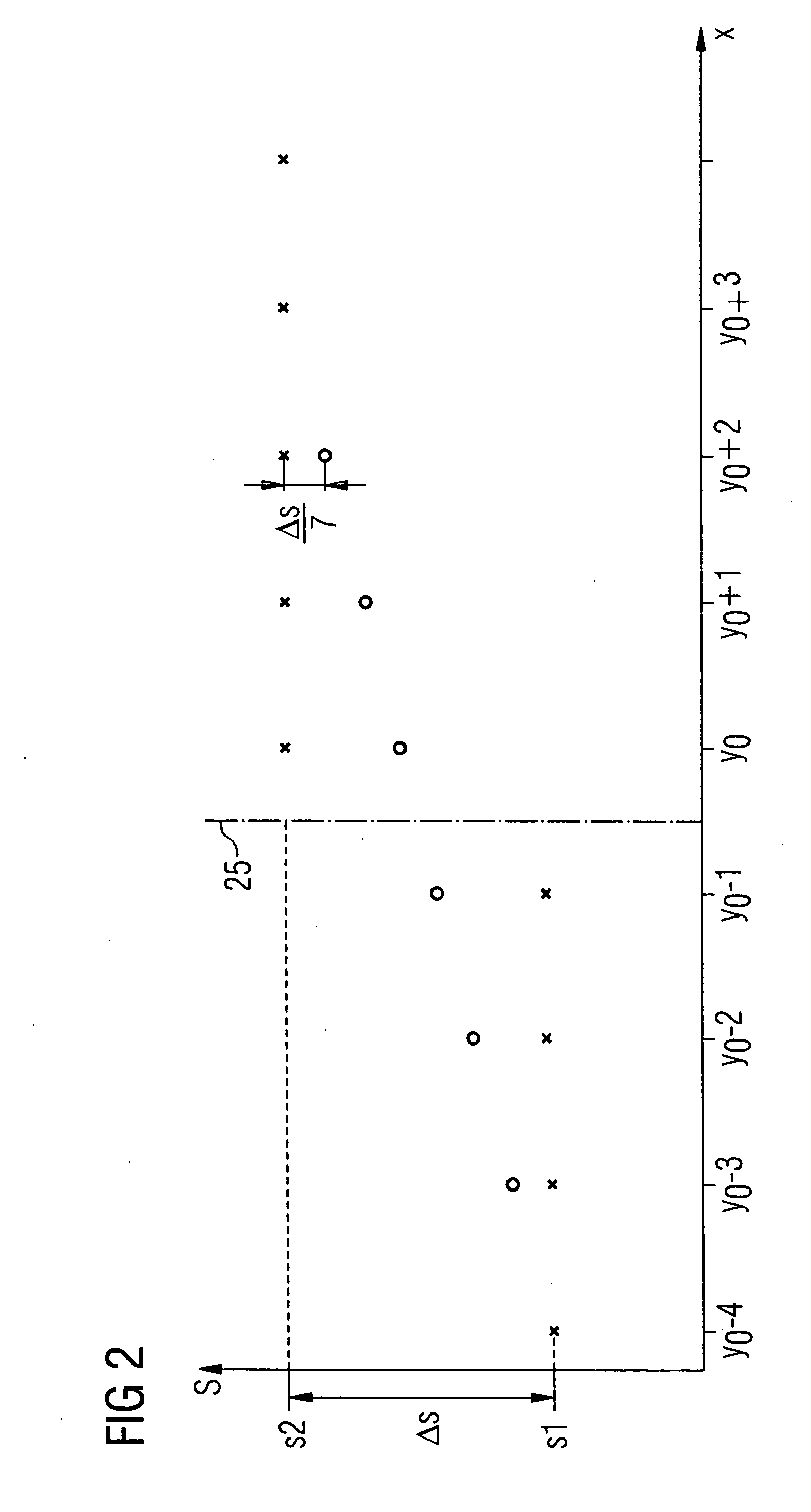Image processing to reduce blocking artifacts
a technology of image processing and artifacts, applied in the field of image processing, can solve the problems of additional information, information must be transferred, visible edges at the block boundary, etc., and achieve the effect of reducing blocking artifacts
- Summary
- Abstract
- Description
- Claims
- Application Information
AI Technical Summary
Benefits of technology
Problems solved by technology
Method used
Image
Examples
Embodiment Construction
[0025]FIGS. 1A and 1B pictorially illustrate a section of an image subdivided into multiple image blocks. Each of the individual image blocks has a number of adjacent pixels, for example a matrix of 8×8 pixels. The individual pixels are associated with specific image information values.
[0026] The image is, for example, reconstructed from an image data stream transferring quantized image information. Due to the quantization of the image information values before the data transfer, an inevitable loss of information occurs that can manifest itself in the reconstructed image as blocking artifacts at the block boundaries between adjacent image blocks. A blocking artifact of this type displays, for example, a visible line in the image along the block boundary between the two blocks.
[0027] The following discussion examines the vertically adjacent first and second image blocks 2, 5, between which runs a block boundary 25. A vertical axis of the image section is designated as the y-axis, w...
PUM
 Login to View More
Login to View More Abstract
Description
Claims
Application Information
 Login to View More
Login to View More - R&D
- Intellectual Property
- Life Sciences
- Materials
- Tech Scout
- Unparalleled Data Quality
- Higher Quality Content
- 60% Fewer Hallucinations
Browse by: Latest US Patents, China's latest patents, Technical Efficacy Thesaurus, Application Domain, Technology Topic, Popular Technical Reports.
© 2025 PatSnap. All rights reserved.Legal|Privacy policy|Modern Slavery Act Transparency Statement|Sitemap|About US| Contact US: help@patsnap.com



